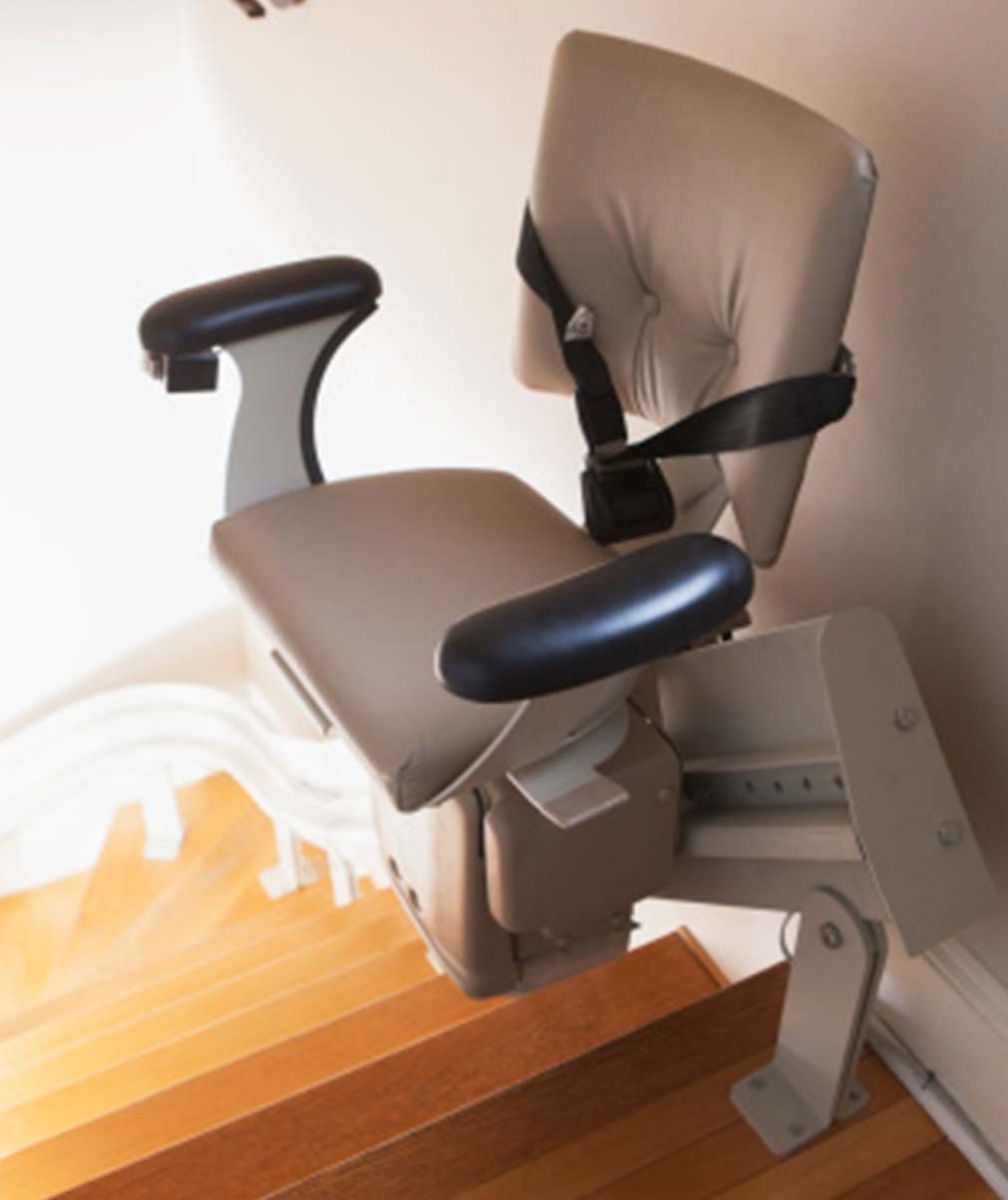More Than Just a Gearmotor Expert

Designing a Gearmotor and Brake System for Extra Safety
The number of products to help older people maintain their mobility has increased as the baby boomer generation ages. In these products safety is critical.
An OEM customer of Bodine Electric Company was having a problem meeting the industry standard that governs the stopping time of the stairlift in the event of a power failure. During the product development process, the customer tested a Bodine right-angle gearmotor with self-locking worm gearing and a fail-safe brake. Both of those features were intended to hold the stairlift in place if power was cut to the motor. As an added benefit, our customer believed these features would also decelerate the stairlift to a stop within the mandated time. But that was not happening.
Bodine engineers identified two fundamental application issues. First, self-locking gearing keeps a load in place after the motor has stopped. It is only marginally effective in providing dynamic braking, because it doesn’t resist the inertial momentum torque of the armature going into the gearing. Second, the OEM connected the fail-safe brake in series with the motor which did not allow for quick stops. The customer thought that when power was cut to the motor the brake would instantly engage. They did not take into account DC motor physics: even without power, the motor acted as a generator until it stopped rotating. The brake did not engage until after the motor stopped. Bodine recommended that the customer design independent connections for the motor and the brake to the power supply. As these design modifications were incorporated into the stairlift design, the customer met their design criteria and the industry's safety standard for a safe stop.
Application Insights
The Design Requirement
An OEM customer of Bodine Electric Company was having a problem meeting the industry standard that governs the stopping time of the stairlift in the event of a power failure.
The Solution
Our team found that the brake was wired in series with the motor, and the motor acted as a generator until it fully stopped. The brake did not engage until the gearmotor came to a full stop. Bodine engineers recommended that the customer design independent connections for the motor and the brake to the power supply.
